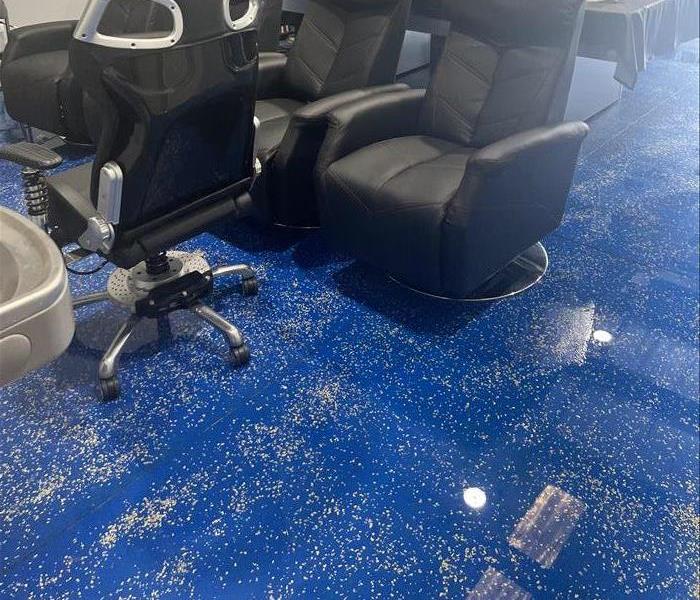Protecting Your Home from Pipe Ruptures: Tips and Solutions by SERVPRO®
1/3/2024 (Permalink)
When it comes to home disasters, few things are as disruptive and damaging as a pipe rupture. It can happen suddenly, leaving you with a mess to clean up and potentially costly repairs. At SERVPRO®, we understand the importance of preventing pipe ruptures and responding swiftly when they occur. In this blog post, we'll explore the leading causes of pipe ruptures, offer prevention tips, and outline the steps to take when a pipe bursts in your home.
Leading Causes of Pipe Ruptures:
Freezing Temperatures: Cold weather can cause water inside pipes to freeze and expand, leading to cracks or bursts.
Aging Pipes: Over time, pipes can corrode or deteriorate, making them more susceptible to ruptures.
High Water Pressure: Excessive water pressure can stress and weaken pipes, increasing the risk of rupture.
Clogs and Blockages: Obstructions in pipes can lead to pressure buildup, eventually causing them to burst.
Tree Roots: Tree roots seeking water sources can infiltrate underground pipes, leading to cracks and ruptures.
Preventing Pipe Ruptures:
Insulate Pipes: Properly insulate exposed pipes, especially in cold regions, to prevent freezing. Use pipe insulation or heating tape.
Regular Maintenance: Have your plumbing system inspected regularly by a professional to identify and address aging or damaged pipes.
Monitor Water Pressure: Install a pressure regulator to maintain optimal water pressure and prevent stress on pipes.
Avoid Clogs: Be mindful of what you flush down toilets and pour down drains. Dispose of grease, oils, and hair properly to prevent blockages.
Tree Roots: Regularly maintain your landscaping, especially near underground pipes. Consider using root barriers to deter root intrusion.
Steps to Take When a Pipe Bursts:
Shut Off Water: Locate your home's main water shutoff valve and turn it off immediately to stop the flow of water.
Call SERVPRO®: Contact SERVPRO® for professional water damage restoration services. We respond quickly to mitigate further damage.
Safety First: Ensure the affected area is safe to enter. Be cautious of electrical hazards and potential structural damage.
Document the Damage: Take photos and document the extent of the damage for insurance purposes.
Remove Standing Water: If it's safe to do so, use buckets, towels, or a wet/dry vacuum to remove standing water.
Begin Drying: Open windows and doors to promote airflow and begin the drying process. SERVPRO® will bring professional-grade equipment to expedite the drying process.
Content Removal: If necessary, move furniture and belongings to a dry area to prevent further damage.
Repairs: After the area is dried, assess and repair the damaged pipes or plumbing components.
Why Trust SERVPRO®:
SERVPRO® specializes in water damage restoration and has the experience, training, and equipment to handle pipe ruptures of any scale. Our team responds quickly to minimize damage, prevent mold growth, and restore your home to its pre-damage condition.
Don't let a pipe rupture disrupt your life. Preventative measures and swift action can make all the difference. Should a pipe burst in your home, remember that SERVPRO® is here to help. Contact us 24/7 for professional water damage restoration services, and we'll be there to assist you every step of the way.
For more information on water damage in Leon County Click Here





 24/7 Emergency Service
24/7 Emergency Service